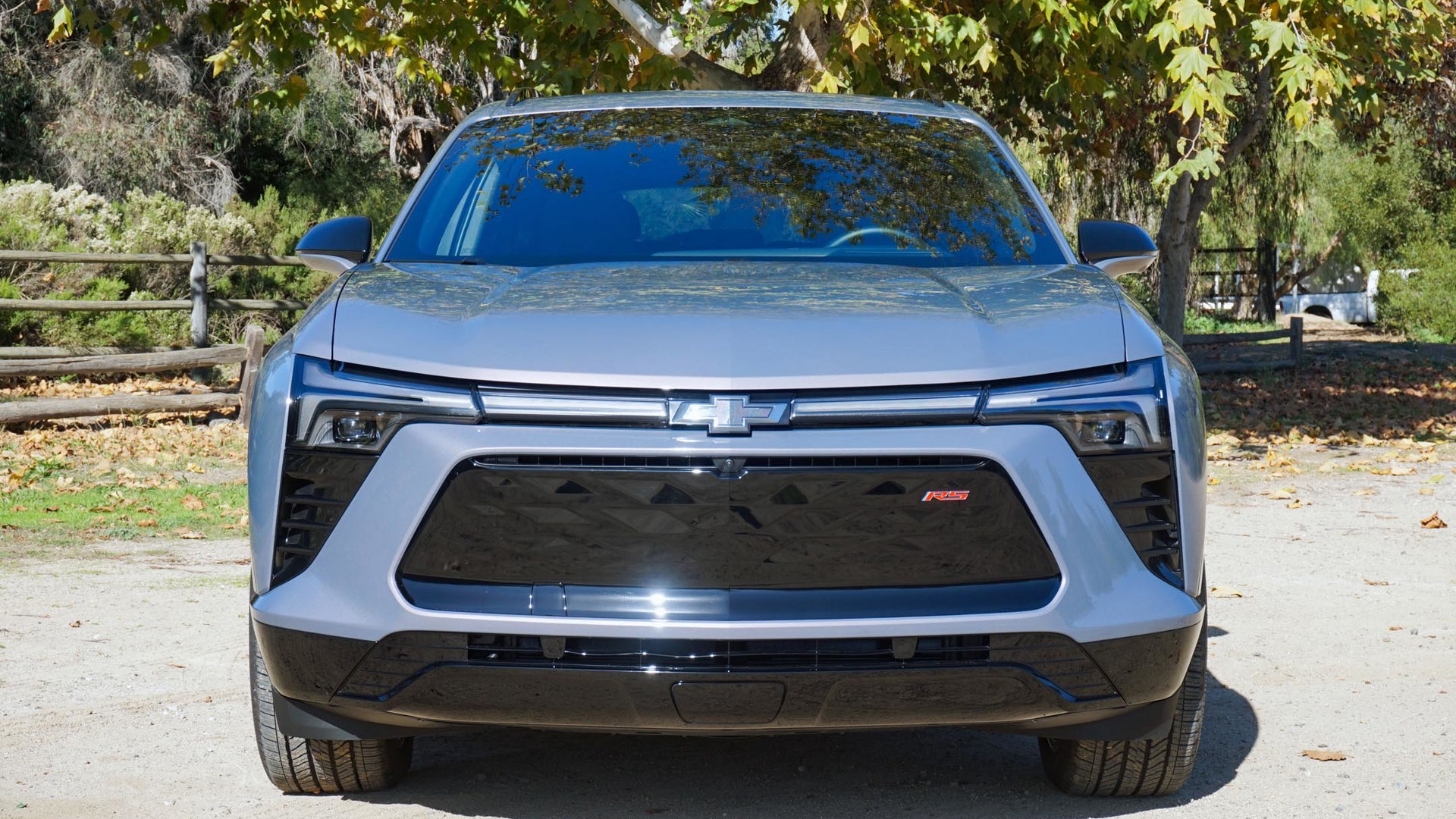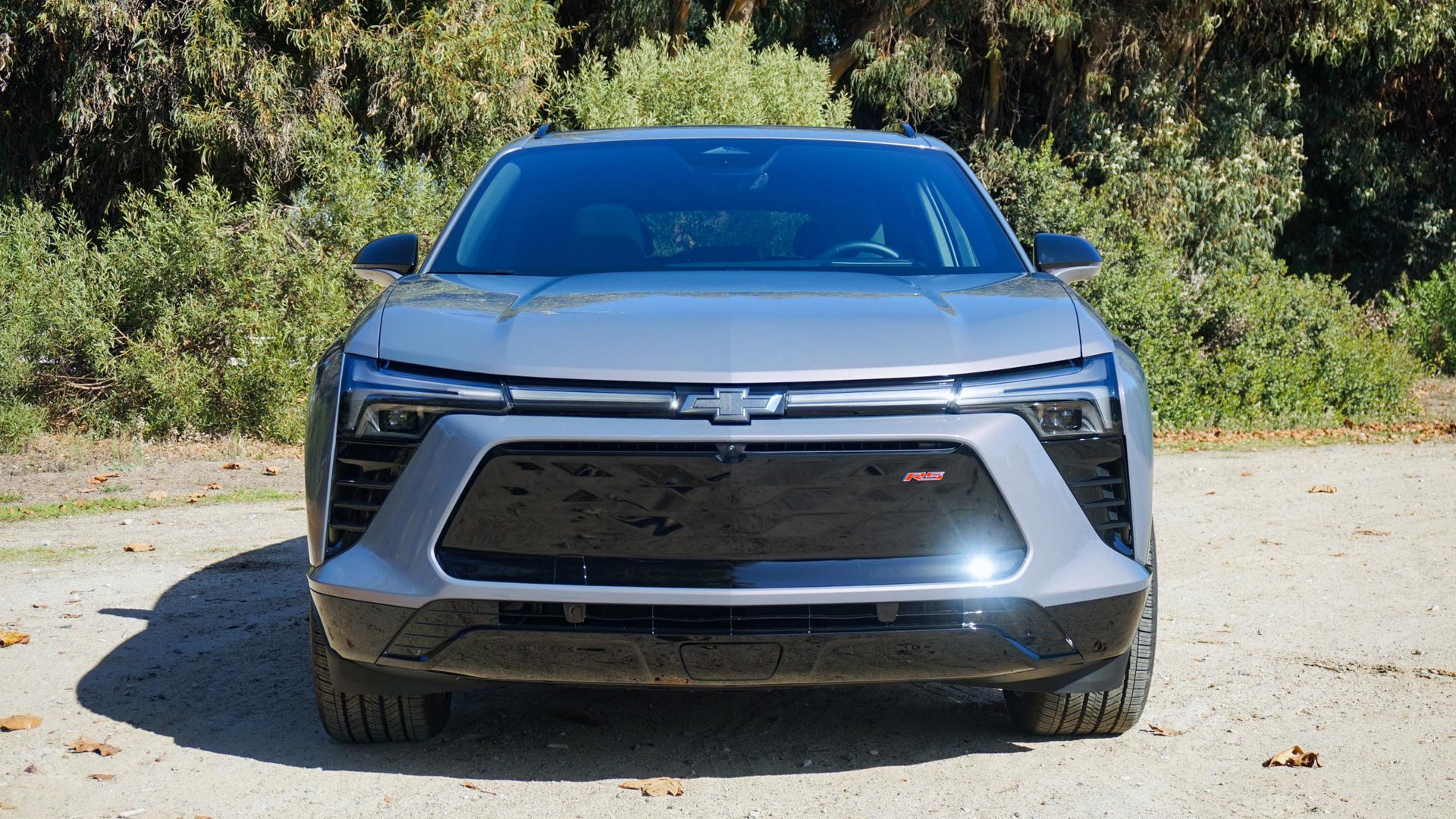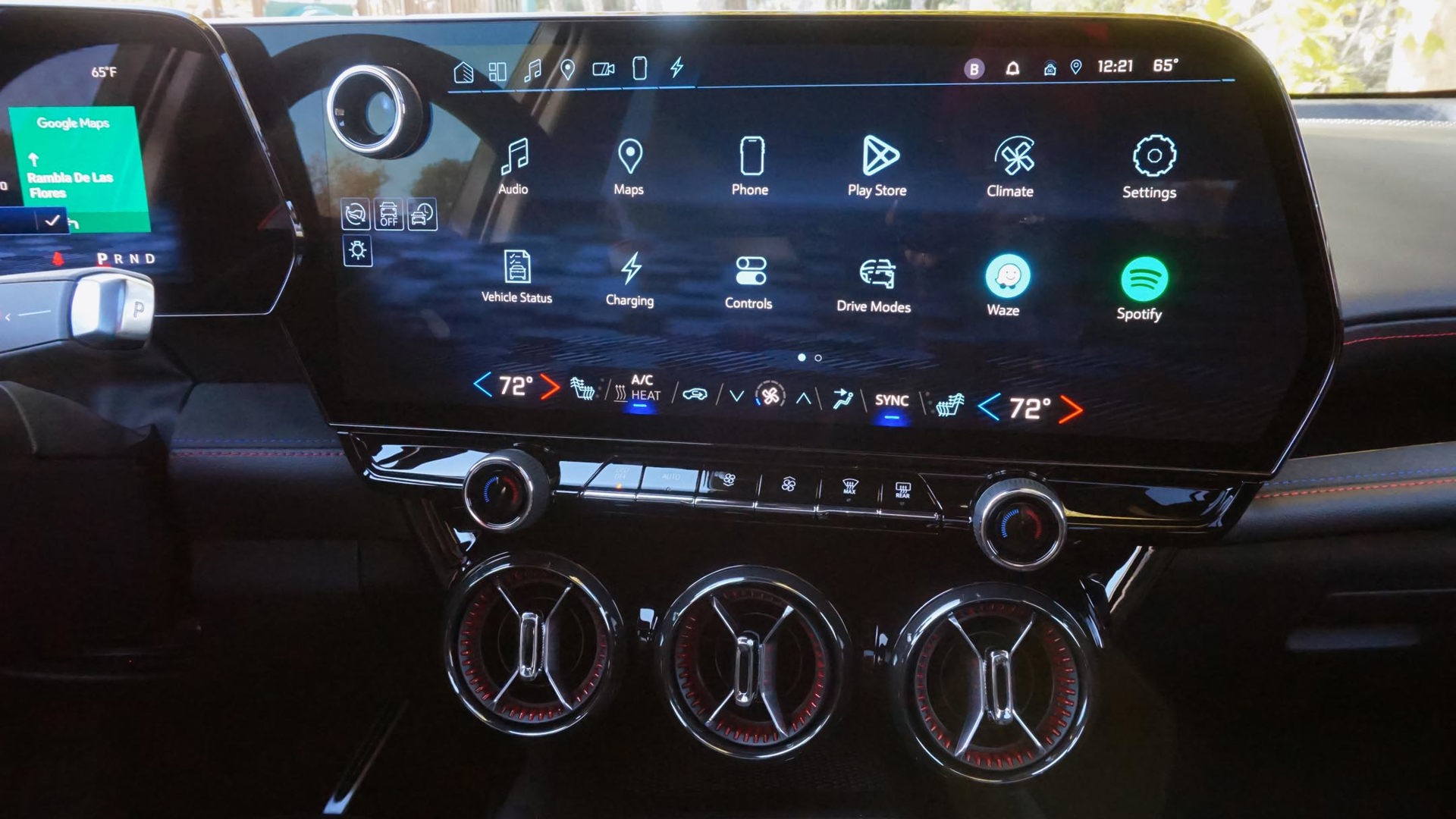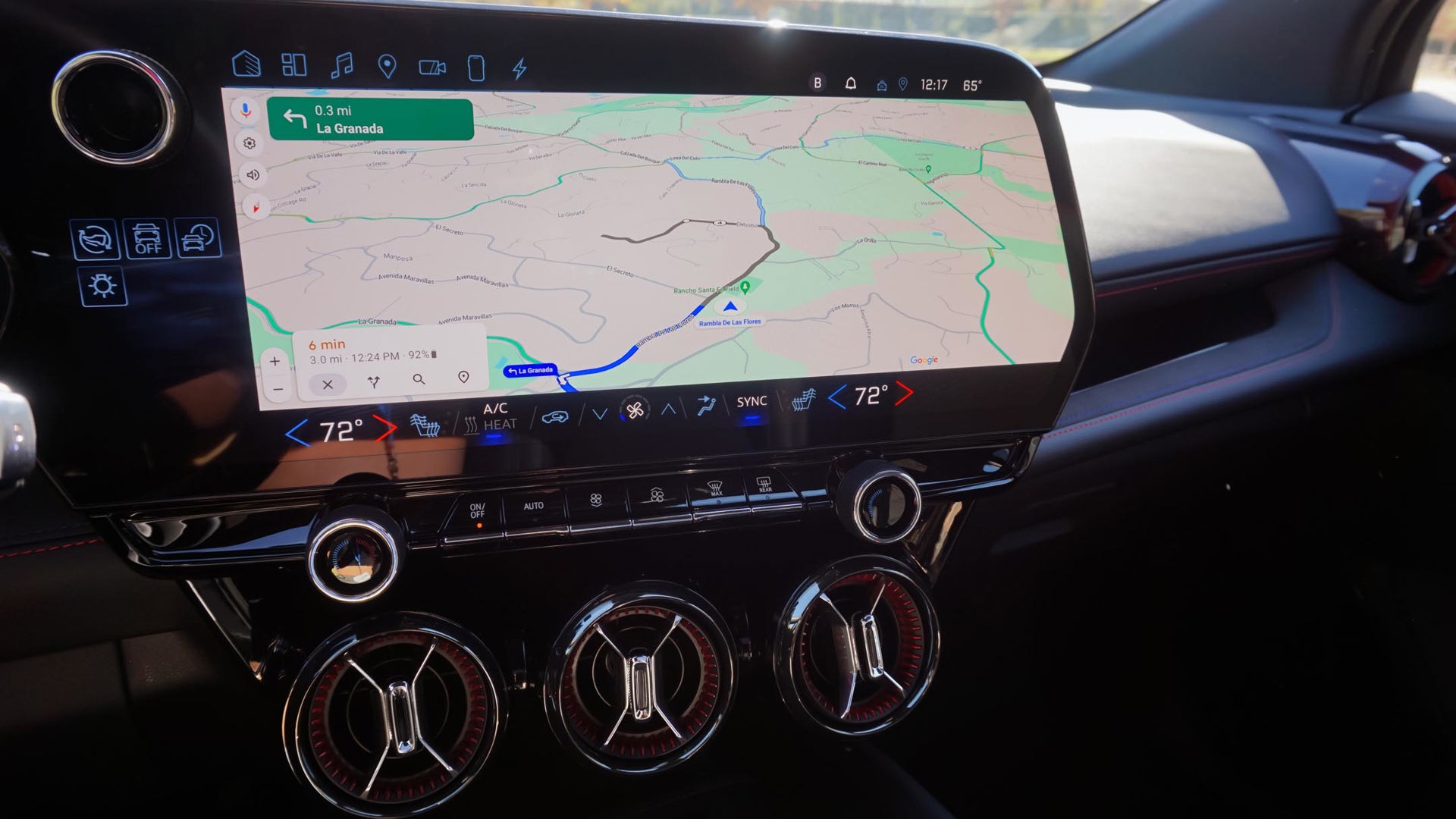The 2024 Chevrolet Blazer EV steps in where its discontinued Bolt siblings couldn’t by offering a zero-emissions vehicle in a body style more Canadians prefer, and with traction at all four wheels.
The Blazer EV offers class-leading range and all-wheel drive while being stylish and user-friendly, making it more compelling to more people. While the Bolt will be back after a brief hiatus, this Blazer marks a serious improvement to this brand’s all-electric offerings.
A Powerhouse Platform
It starts with the Ultium platform – a scalable electric vehicle (EV) architecture introduced by parent company General Motors (GM) that underpins everything from the GMC Hummer EV to the Cadillac Lyriq, the upcoming Chevrolet Silverado EV, and this Blazer EV. Four powertrain configurations of the Blazer EV will eventually be available in Canada, beginning with rear-wheel drive (RWD) and all-wheel drive (AWD) models. A front-wheel drive (FWD) model and a range-topping performance-focused SS model will join the lineup in the future.
The base Blazer EV is the AWD model. Its 85-kWh battery offers up to 449 km of range along with 282 hp and 333 lb-ft of torque. The RWD model has a larger 102-kWh battery offering a generous 521 km of range with 340 hp and 325 lb-ft of torque. This range figure puts the Blazer EV at the top of the pack among its crossover competitors, with only the long-range Tesla Model Y offering more.
A KPMG study found most Canadians won’t consider an EV unless it provides a minimum of 400 km of range, and the Blazer EV is one of the first mainstream models to crack the 500-km threshold, which makes it more comfortable, convenient, and compelling, especially if you road-trip often or don’t have access to home charging.
Depending on the model, the Blazer EV can accept fast charging speeds of 150 kW or 190 kW, adding at least 100 km of range in about 10 minutes at a DC fast-charger in ideal conditions. More notably, it comes standard with an onboard charger capable of both Level 1 and Level 2 charging. If you have access to a 240-volt outlet like the one used to plug in an appliance like a dryer, you can charge fully overnight without needing to install any specialized charging equipment. It’s the kind of improvement that removes yet another barrier to adoption.
The Blazer EV doesn’t offer vehicle-to-home bidirectional energy transfer yet, but Chevrolet says it will in the future. Blazer EVs ship with a CCS charging port located on the front driver-side panel and not the Tesla-style port that’s being adopted by more brands, including those owned by GM. Expect an adapter to be introduced in the future.
Familiar Driving Feel
Most EVs feel quite similar to drive, and the Blazer EV doesn’t depart from this convention. With its battery pack underneath keeping its centre of gravity low, it feels stable and planted, ironing out rough roads well and feeling confident and flat in corners. The steering lacks feel, which is typical for this segment, and like most EVs, the instant burst of acceleration when called for is always appreciated.
The Blazer EV has one-pedal driving and allows drivers to toggle between three settings: off, on, and high. At city speeds, the high setting feels too grabby and will likely make passengers carsick if they’re not warned. It takes a lot of getting used to in order to modulate the pedal smoothly, and it’s easier to use in the less aggressive mode.
Standard surround-view cameras make the Blazer EV easy to park and manoeuvre in tight spaces, but forward visibility is slightly obstructed by thick A-pillars and an aggressively sloped windshield.
Chevrolet says it paid extra attention to limiting noise, vibration, and harshness, and in general it’s quiet and smooth inside until you get on the highway, where a lot of wind noise makes its way into the cabin. The lack of engine noise also meant the occasional creak could be heard emanating from some dashboard panels during this test.
Grateful for Google

In a huge departure from what we’re used to, the Blazer EV’s infotainment interface is based on Google’s built-in Android Automotive OS (AAOS) software. There’s no Android Auto or Apple CarPlay, but the plus side is that this implementation of Google as a vehicle’s native software is one of the best applications I’ve seen so far. Android Auto and Apple CarPlay were excellent solutions previously because most automakers’ native infotainment software lacks functionality, but this new Google interface is super intuitive and user-friendly, negating the case for smartphone mirroring in the first place. [We expect some angry iPhone users will have an issue with this. – Ed.]
Starting with the huge screen that measures 17.7 inches diagonally, the display is crisp and responsive, and all of it is used right up to the bevelled edge. All the menus are logically organized, all the icons are clearly labelled, and the shortcuts are obvious, so it’s easy to find what you’re looking for.
The system also dramatically alleviates range anxiety. With integrated Google Maps navigation, the system will tell you your battery’s state of charge when you reach your destination and will update your range estimates based on GPS data and your driving style. If you’ve entered a destination you don’t have enough range to reach, the system will plot out charging stops and update your trip time based on how long you’ll need to charge. The Google system makes it easy to find charging stations and can tell you their speed, availability, and price. If you’ve entered a fast charger as your destination, it will pre-condition the battery while you’re driving for more efficient charging.
The customizable instrument cluster has five different display styles and will even show Google Maps navigation data, minimizing the need to flip back and forth between different functions on the centre screen. It also shows a lot of useful information that helps a driver understand their driving efficiency. Turn-by-turn navigation instructions can also be shown in the available head-up display.
With physical buttons and knobs for climate controls, the screen also has a customizable icon tray of shortcuts and sections where digital controls for climate, lighting, and one-pedal driving are permanently displayed for quick access. This setup limits distractions by curbing how much a driver needs to tap the screen to complete everyday tasks. Too often with EVs, automakers sacrifice user-friendliness by centralizing all functions in the touchscreen without offering simple menus or obvious, convenient shortcuts. The Blazer EV’s system was miraculously easy to get used to with barely any learning curve required.
The only caveat is that this excellent connectivity will require an OnStar subscription to enable a data/internet connection, which is an added expense.
Stylish Inside and Out
There’s little about the Blazer EV’s style that screams it’s an EV. The crossover is stylish and sharp, and the silhouette and shape are quite conventional – perfect for those who want an EV that doesn’t look like a spaceship or a bar of soap. The unique lighting signatures are perhaps the only design cues hinting at its electric powertrain, and its light animations can communicate its stage of charge while plugged in.
The Blazer EV can hold up to 1,646 L of cargo with the back seats folded flat, and while there’s no frunk, the cargo hold is the same no matter which Blazer model you get. There are large cubbies in the cabin for storage; there’s even room a handbag in either the centre console or the covered storage bin ahead of the cupholders.
Inside, the mix of physical buttons, dials, and large screens presents a familiar but fresh interior that’s not at all intimidating. The air vents have a unique and functional design that adds some visual flair to the interior along with textured trims, dual-tone seats, and ambient lighting.
Pricing and Availability
The Blazer EV is priced so it qualifies for incentives where available, and it helps that there’s a long list of standard features and safety equipment, including a heated steering wheel, heated seats, and a heat pump, which allows for more efficient heating in the winter without a detrimental impact on range.
The 2024 Chevrolet Blazer EV 2LT AWD with 449 km of range starts at $63,298, which includes destination, dealer fees, and air conditioning tax, but doesn’t account for any incentives. The RS AWD model with 449 km of range is $73,298, and the RS RWD is the same price but offers 515 km.
Final Thoughts

The 2024 Chevrolet Blazer EV provides a seamless transition for drivers new to electrification and checks a lot of boxes as a compact crossover in general. The Blazer EV manages to be both high-tech yet effortlessly easy to operate, and stylish yet practical while also addressing many of the concerns that a lot of Canadians have about EV adoption. Nailing the fundamentals of generous range, excellent user-friendliness, and outstanding well-roundedness, the Blazer EV raises the bar in a way that will force the rest of its competitors to step up.
The 2024 Chevrolet Blazer EV is available to order now, and deliveries have already begun.
















































